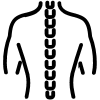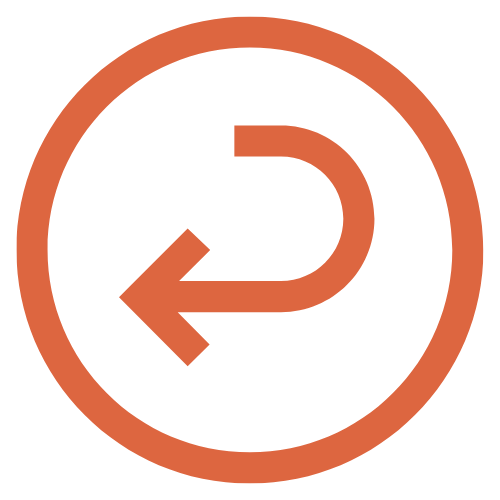Are you wondering where your back pain comes from when you do crunches? When performed incorrectly, abdominal exercises can actually cause back pain, which is why many people experience this problem due to poor posture and exercise execution.
In this article, we help you understand where these pains come from and how to avoid them by strengthening your abs effectively.
Why does your back hurt when you do sit-ups?
Incorrect technique and poor posture are often the main causes of back pain when doing crunches. If you pull on your neck or excessively arch your lower back when performing the famous crunches, your spine and back muscles will be under too much strain, resulting in pain. Additionally, weak abdominal or lower back muscles can also be the cause of back pain during abdominal exercises, as the muscles have to compensate.
Also, neglecting to stretch or warm up before exercising can contribute to back pain because the muscles are not prepared for the effort.
Finally, some abdominal exercises are not suitable because they can be too intense, which is why you should train gradually according to your level.
Mistakes to avoid when doing abs
Performing exercises incorrectly
The most common mistake is performing abdominal exercises incorrectly. To avoid injury or back pain, you must maintain good posture during your exercises by keeping your lower back in contact with the floor and using your abs by contracting them with each movement, instead of pulling on your neck or arching your back.
Overloading the lower back
Overloading your lower back with heavy weights or improper execution can lead to back pain and injury. Certain exercises, such as full sit-ups, should be avoided because they can put excessive pressure on your spinal discs, especially if you don't yet have a strong core.
Only work your abs
If you neglect other muscle groups by focusing only on your abs, you'll create a muscular imbalance that results in back tension and pain. That's why you need to incorporate exercises to strengthen your back muscles as well as other core muscles. This will allow you to properly support your spine and maintain muscular balance.
Force on his neck
Straining your neck during abdominal exercises is a very common mistake that causes neck and back pain. To avoid this mistake, you should keep your head and neck aligned with your spine and engage your core muscles during the exercise instead of straining your neck.
What exercises for abs without back pain?
There are several exercises to perform abdominal exercises without back pain, these exercises reduce pressure on the spine.
The plank or sheathing

The plank is an excellent exercise for strengthening your core and working your abs deep without putting strain on your back. Additionally, plank exercises also help strengthen your shoulders and legs.
Lie face down on the floor and raise yourself up on your forearms and ears, keeping your back straight. Do not position your pelvis too high or too low. Try to hold this position for as long as possible several times. Increase the time spent in the core as you progress.
The Bridge

The bridge is an effective exercise that stimulates your abdominal muscles, your deep muscles such as the transverse abdominis but also the rectus abdominis and the obliques.
Lying on your back with your knees bent and your feet flat on the floor, slowly raise your hips toward the ceiling, engaging your abs and glutes. Hold this position for a few seconds, then slowly lower back down.
Birddog
The Bird-Dog exercise helps improve core stability and strengthen your abs. It's an effective exercise for preventing back pain.
In a four-legged position with your hands under your shoulders and your knees under your hips, extend your right arm and left leg simultaneously, keeping your back straight. Hold this position for a few seconds, then repeat on each side.
Dead Bug
The dead bug is the perfect exercise for strengthening your abs while protecting your back. It also improves core stability and coordination.
Lie on your back with your arms extended toward the ceiling and your knees bent at a 90-degree angle. Lower your right arm and left leg close to the floor, then return to the starting position and repeat in the opposite direction.
FAQ: Abs and Back Pain
Why does my back hurt when I do sit-ups?
If you experience back pain when doing sit-ups, it's likely due to poor technique or poor posture. Avoid common mistakes like pulling on your neck, arching your back, or only working your abs.
What are the most common abdominal exercises that cause back pain?
Full sit-ups and crunches are the most common abdominal exercises that cause back pain if done incorrectly, as they can put pressure on your spinal discs and back muscles.
What exercises can I do to avoid back pain while working my abs?
To avoid back pain when doing sit-ups, try focusing on planks, bridges, bird dogs, and dead bugs. These exercises allow you to work your abs without putting pressure on your back.
How to properly perform the plank to avoid back pain?
To properly perform the plank without back pain, you must keep your body well aligned and neither lower your pelvis too low nor raise it too high.
What are the benefits of the plank for the back?
The plank strengthens the abdominals, back, shoulder and leg muscles, improves core stability and posture, and reduces the risk of back pain.
How to progress in abdominal exercises without getting injured?
To progress in abdominal exercises without injuring yourself, you must start with simple exercises adapted to your level, then gradually increase the time and repetitions while maintaining correct execution technique.
Should I avoid sit-ups if I already have back pain?
If you already suffer from back pain, we recommend consulting a healthcare professional before engaging in any exercise. Some exercises may help, while others may worsen your condition.
How often should I do abdominal exercises without risking back pain?
The ideal frequency for working your abs is 2 to 3 times per week, to allow for muscle recovery between each workout.












